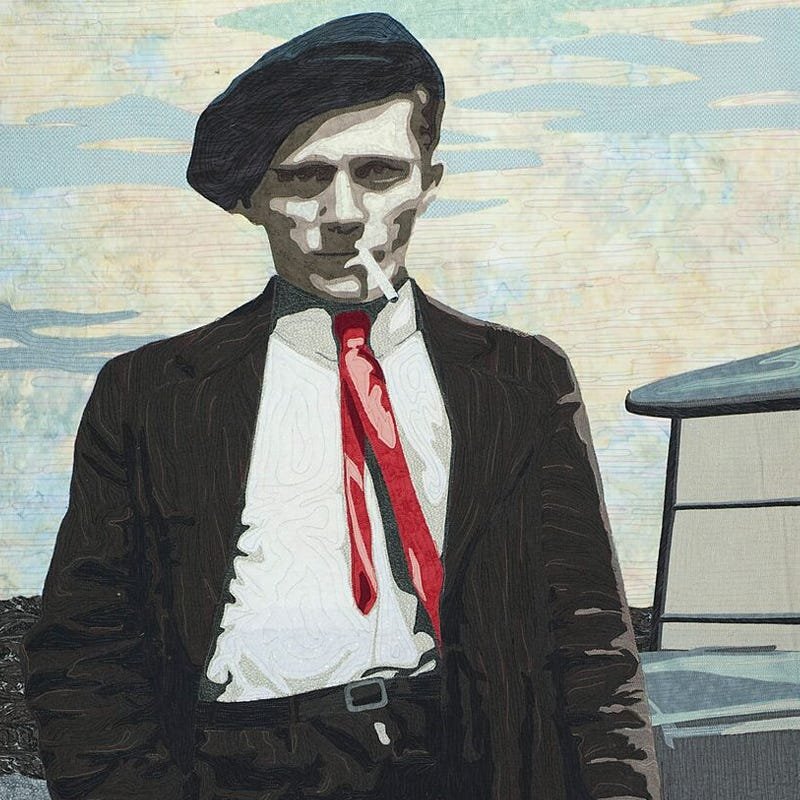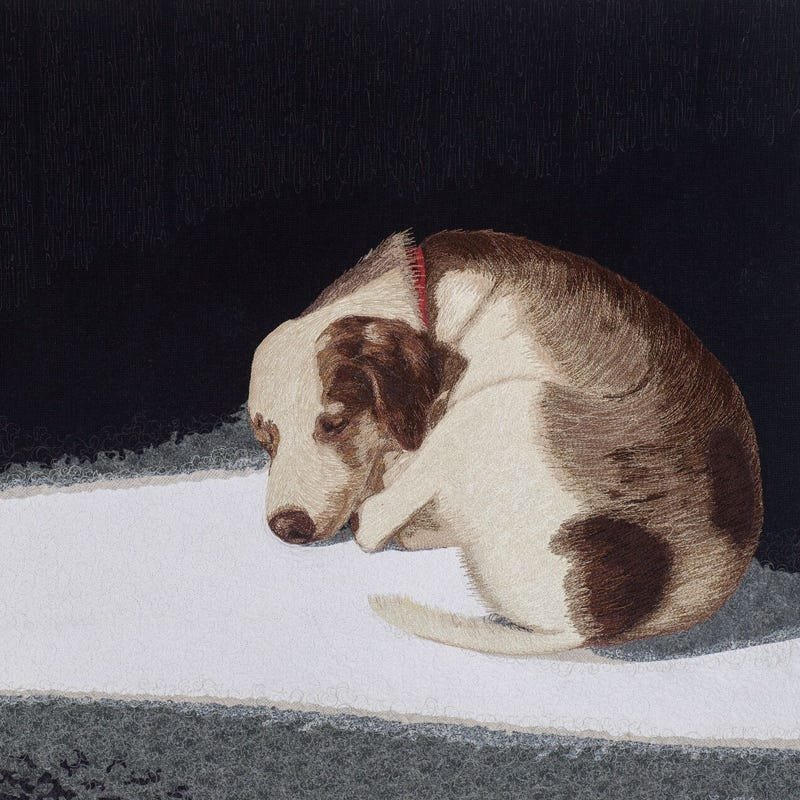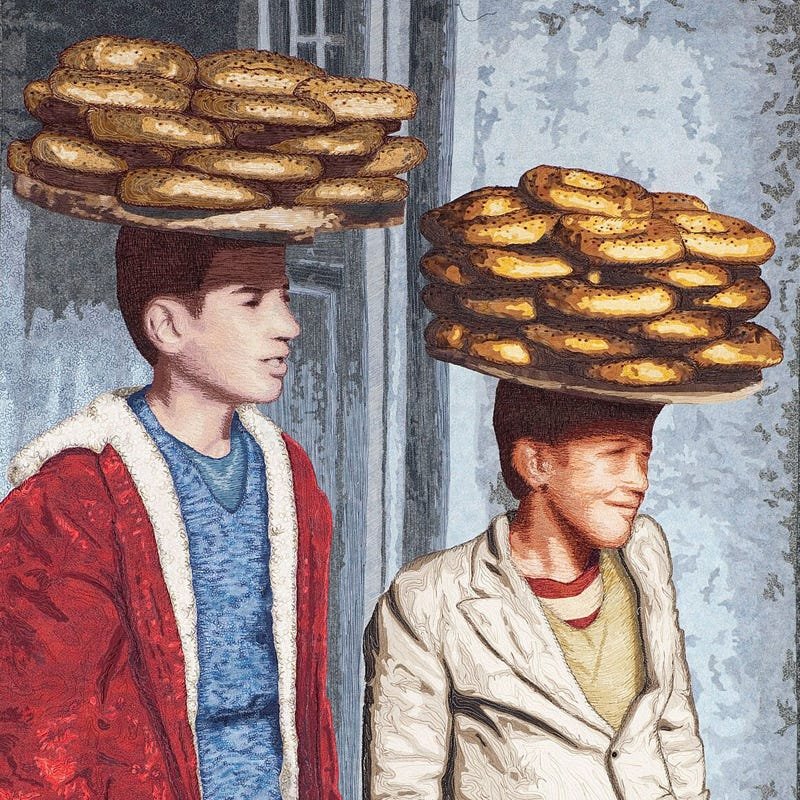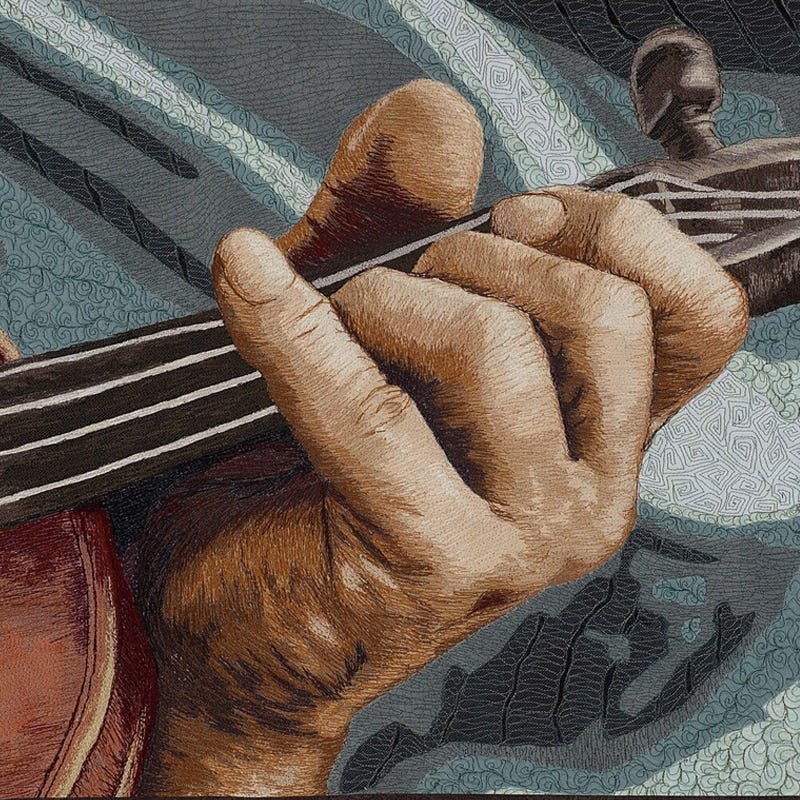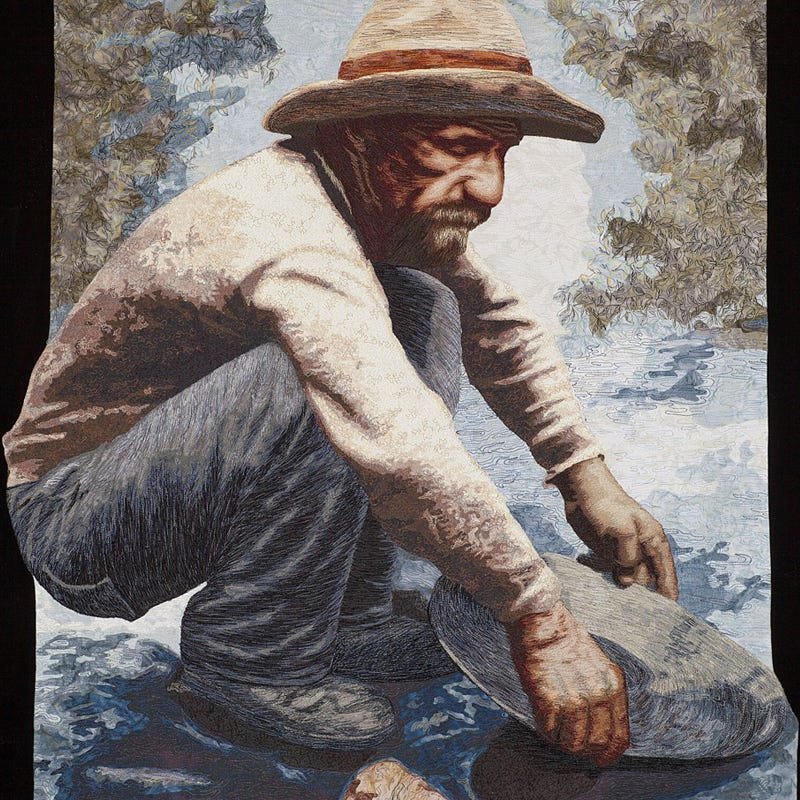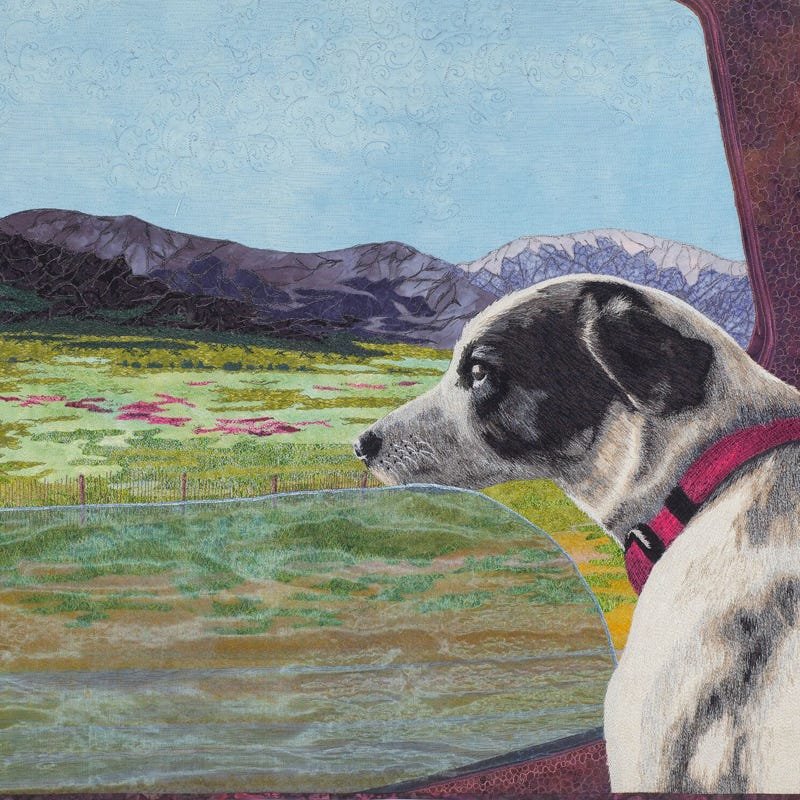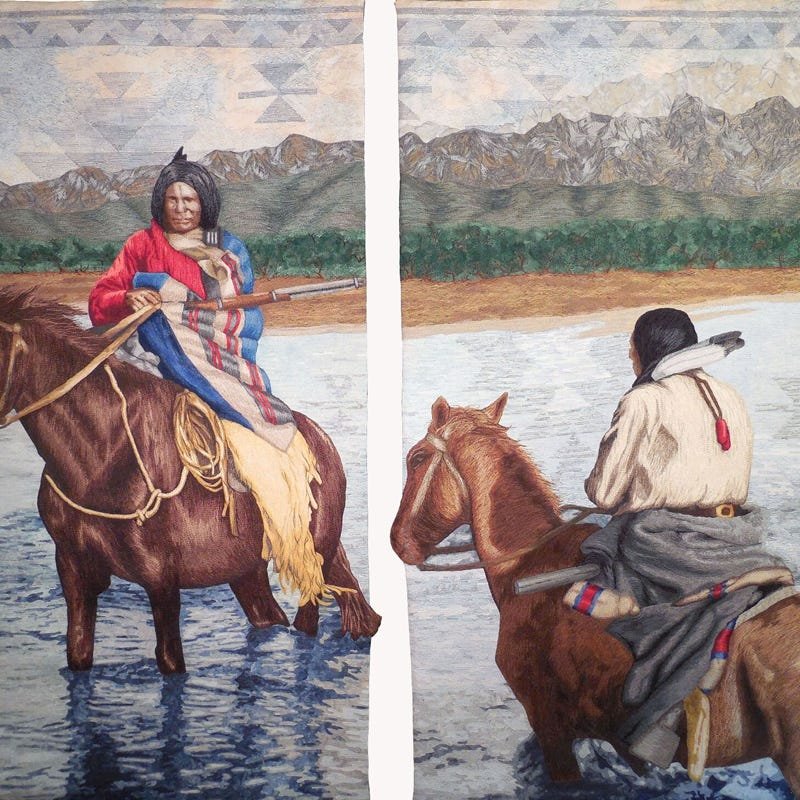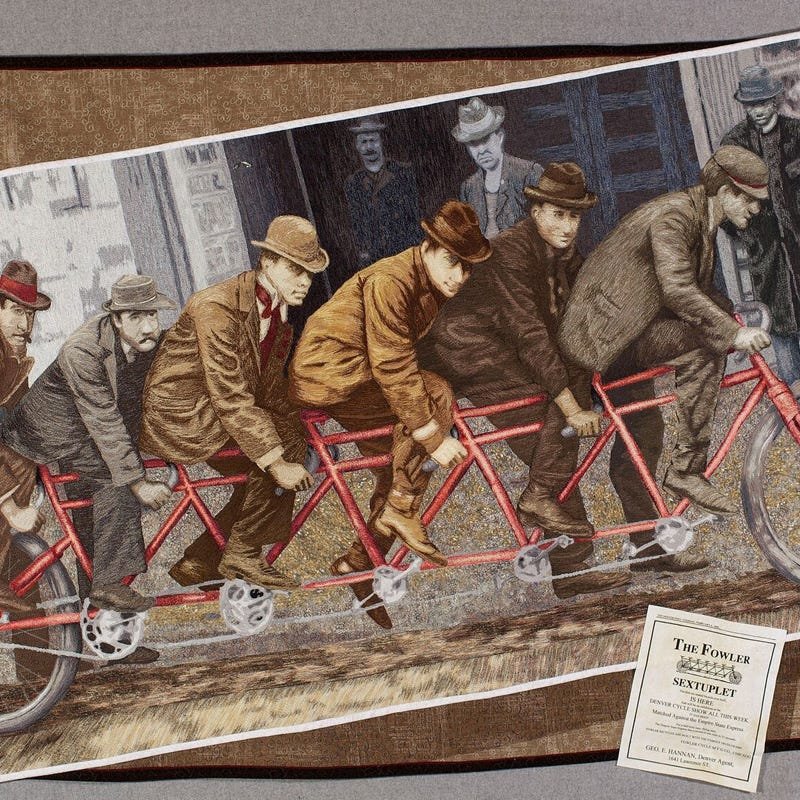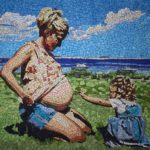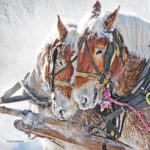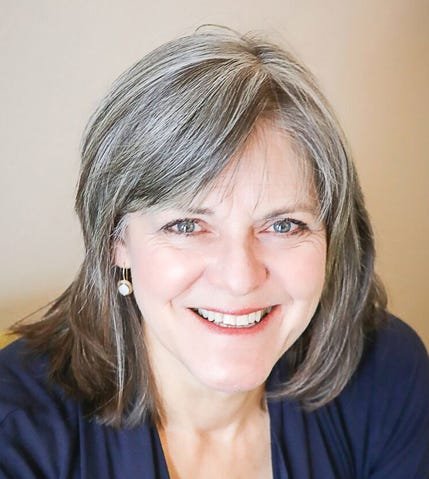
Lea began sewing at age 6 and quilting at 16. While living abroad, Lea immersed herself in interacting and learning with the people and traditions of many cultures, including studying carpet weaving in Turkey and fabric dyeing in Japan. Upon her return to the states in 2001, Lea discovered art quilting. Her explorations in textile art led her to develop a distinctive style of contemporary realism using fabric collage and thread painting. Lea’s award-winning portrait and genre quilts have been exhibited in many national and international shows and competitions.
Lea tells us, “Quality results begin with quality products and that means Superior Threads. My favorite is OMNI. I experience smooth stitching, low lint, and none of the tension problems and fraying that I get with other threads. I usually have a lot of ground to cover when I’m thread painting, so I don’t want to waste time fixing problems. OMNI’s strength means I can move quickly and efficiently. I pair it with Bottom Line in the bobbin. I achieve realistic results because of the subtle blending that I can do with OMNI’s wide color range. I love to blend OMNI with variegated threads from OMNI-V and King Tut.
– Lea McComas –
Favorite Thread: OMNI, OMNI-V and Bottom Line
Non-Quilting Hobby: Hiking in the mountains
Quilting Since: 1976
LEA’S RECOMMENDATIONS



LEA’S FEATURED QUILTS
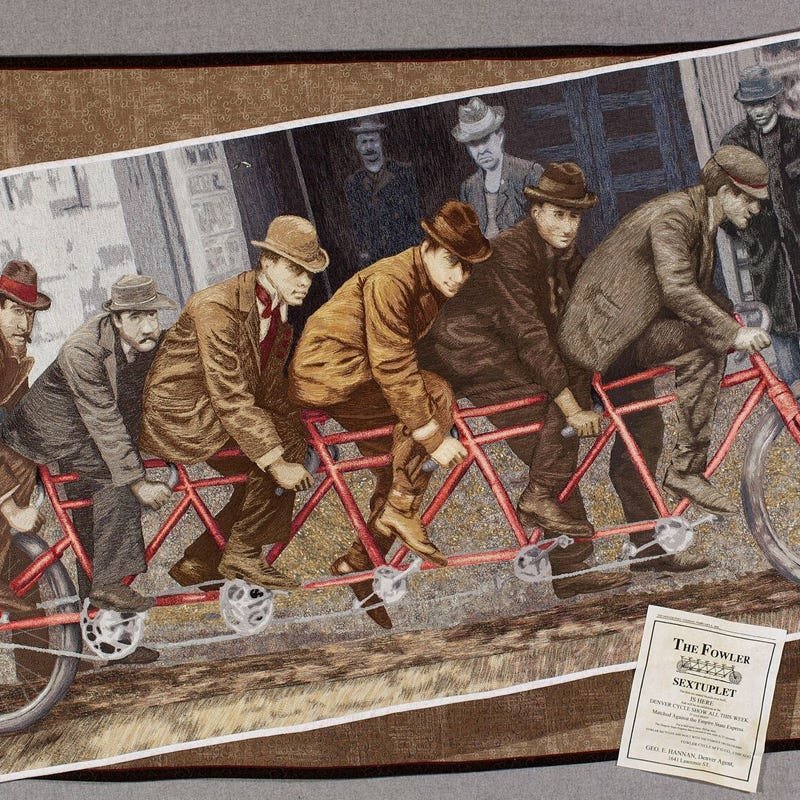
Bike Boys
This piece was inspired by a photo of the Fowler Sextuplet, the first bicycle ever built for 6 riders. The team of the Fowler Sextuplet was a sensation at the first Denver Cycle Show held in 1896. Bike Boys is a tribute to that long tradition of cycling, innovation, physical fitness, and competition that is life in the American West.
People often ask how long it took to make this piece. I always respond, “Nine months to put it all together, but two years to get up the nerve.” This was a pretty intimidating composition . Now that it’s complete, I consider it my masterwork.
This complex composition of 11 figures incorporated 91 different fabrics and was stitched with 114 different threads, an estimated 13 miles of thread. The color scheme is generally neutral, but accents of red give it energy. The buildings and onlookers were created with cool, grey tones while the road and cyclists were done in warmer beiges and browns. This creates a sense of depth and visually separates the background from the foreground.
Initially this piece consisted of only the 3 x 6′ pictorial panel. Once finished, I felt that it was too compact and busy. I expanded the piece so the pictorial panel is positioned over a larger, simple panel that provides some negative resting space for the viewer’s eye.
This piece was first shown at the International Quilt Festival Houston 2014 where it was awarded Superior Threads Master Award for Thread Artistry. Since then, it continues to travel to venues nationally and internationally where it is always a crowd favorite.
Crossing Over
Crossing Over is the sixth piece in my series on the history of the American West. The horses and rifle indicate elements of European culture that have already supplanted the traditional weapons and transportation of the Native American peoples. The Sentinel, the left panel, stands proud and defiant, while the Rear Guard, the right panel, indicates the inevitable yielding to a stronger force. Crossing the river, to place a protective barrier that might isolate oneself and impede one’s foes, proves to be an act of resistance that is inadequate to forces that besiege. The viewer, stands in the place of that force, likely unaware of the true essence and value of what is being lost, destroyed, or pushed aside.
I faced several challenges making this piece. My first challenge came in photo-editing. The inspiration photo included 5 figures. I had to isolate the figures I wanted to use, rearrange them, and adjust size to create the right sense of perspective.
The second challenge was selecting fabrics. I found wonderful choices in my stash and began putting together the environmental elements of the panels. It soon became clear I was going to run short of the fabrics for the river, mountains, and sky. I searched my favorite quilt stores, but couldn’t locate additional fabrics that matched.
The final challenge was thread painting. The inspiration photo was grainy, dark, and blurry in places. It didn’t provide clear details of the horses. I solved this problem with additional research to locate good images from which I could extrapolate the information needed to stitch realistic animals.
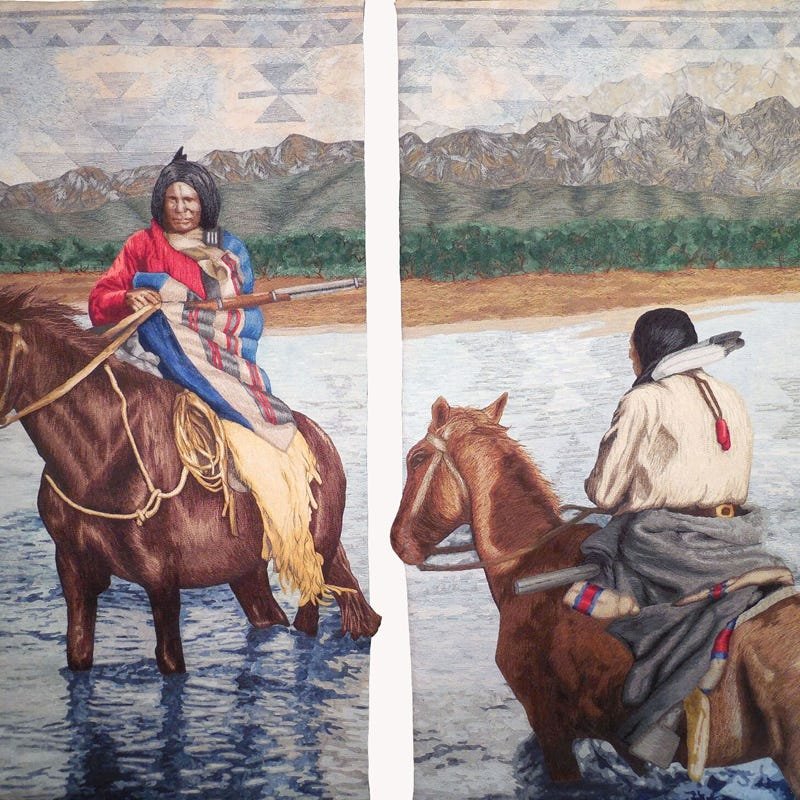
LEA’S GALLERY
